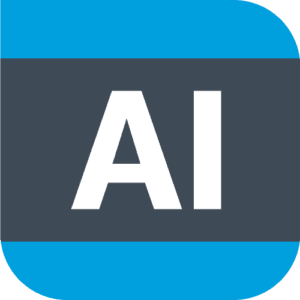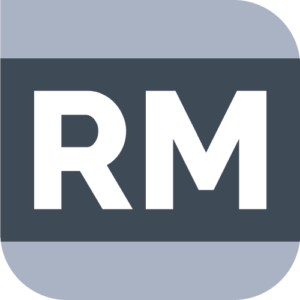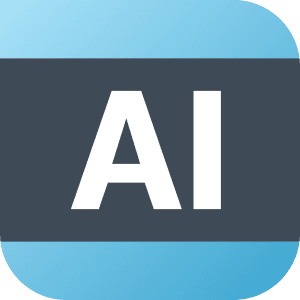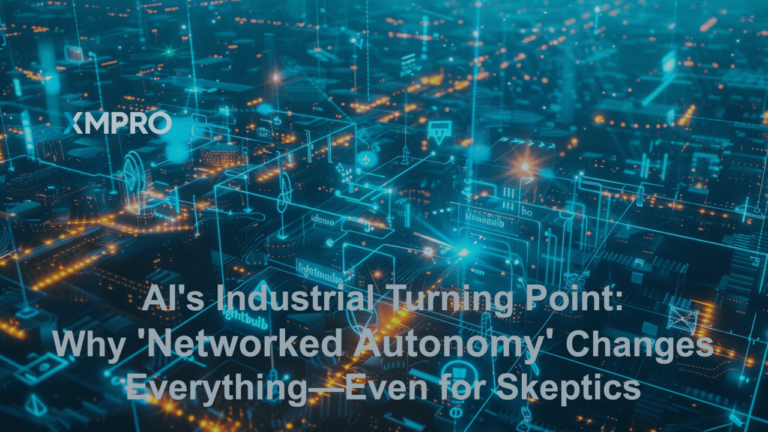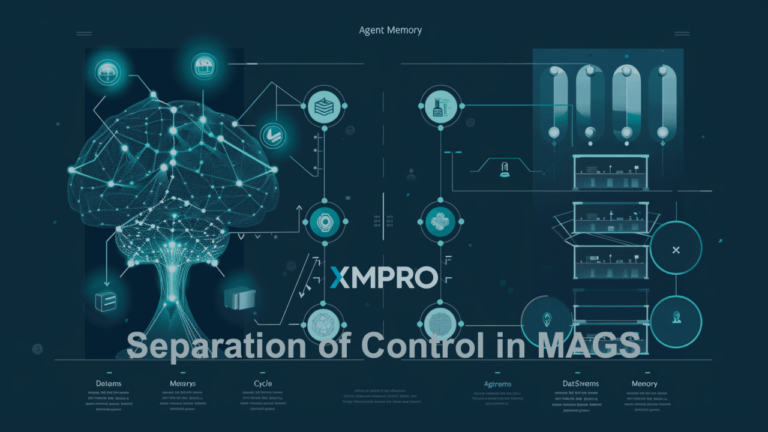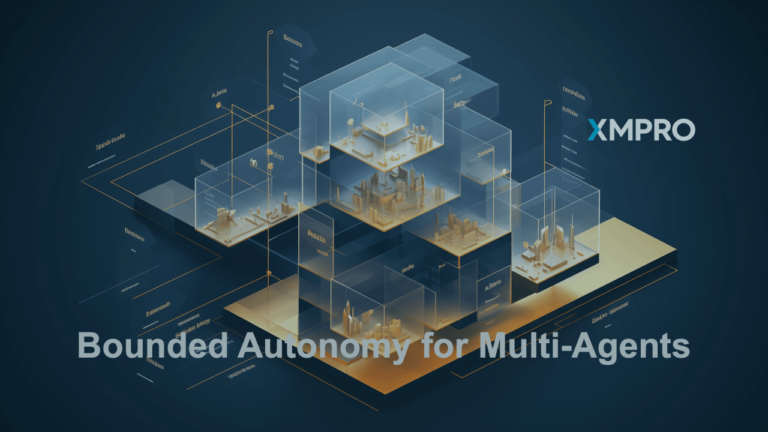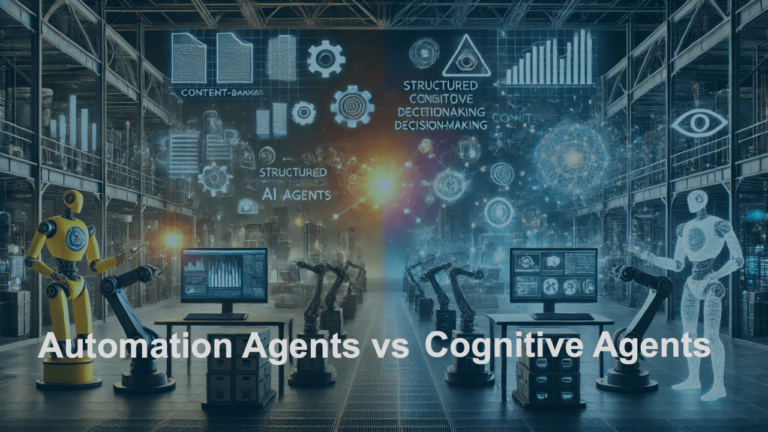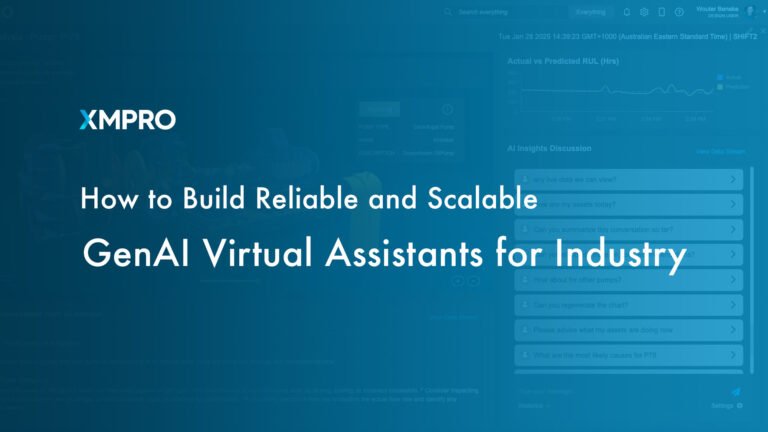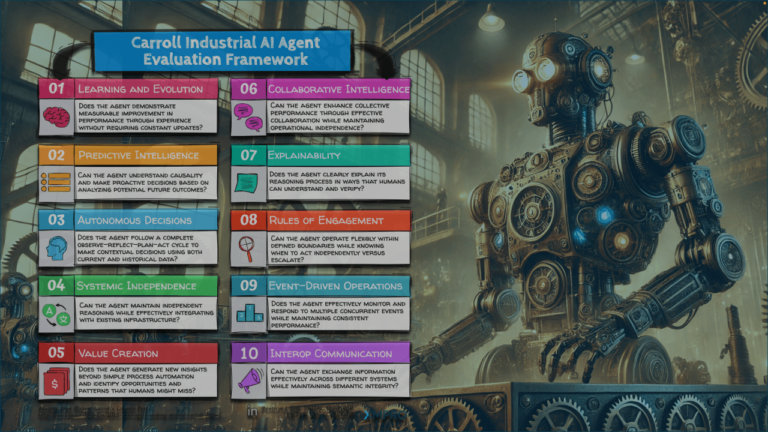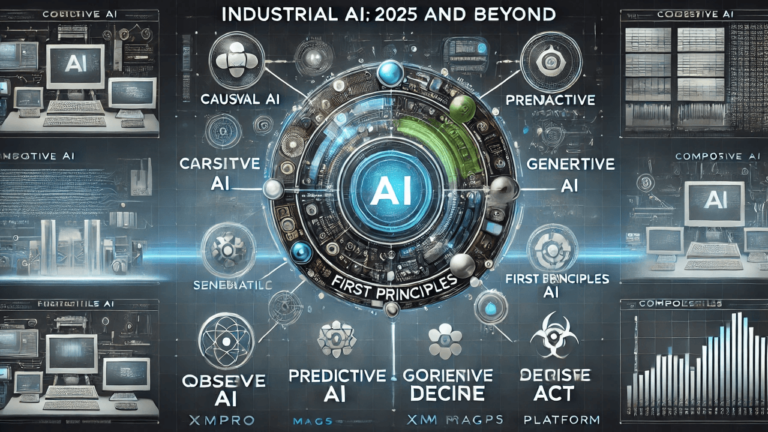XMPro was recently named a Hot Vendor for Digital Business Platforms by Aragon Research and also included as an Innovator in their inaugural Globe for Digital Business Platforms.
So, what is a Digital Business Platform or DBP and why should I care? Is it just a new three-letter acronym to add to the IT alphabet soup that my organization already has, or is it something new that will add value to my business? Where does it fit my ERP, CRM, EAM, HRM, SCM, IoT, or YAA (Yet Another Acronym)? What does it mean for our Digital Transformation and digitalization projects?
The best way to explain a Digital Business Platform is to look at what it is, what it does, and what it means for you.
What It Is
It is a recombination, through intelligent integration and orchestration, of different digitalization technologies in a single solution (or solution stack) that enables you to create new digital business assets. These new digital assets are key capabilities that support real digital transformation of business models and processes. (More on the difference in my Forbes article)
Andrew McAfee and Erik Brynjolfsson describe the power and impact of recombination in the digital era in their brilliant book The Second Machine Age – work, progress and prosperity in a time of brilliant technologies. It is where the new whole is greater than the sum of the old parts.
Recombinant innovation refers to the way that old ideas can be reconfigured in new ways to make new ideas. It is similar to the way an agricultural research station develops improved plant varieties by cross-pollinating existing plant varieties. McAfee and Brynjolfsson use the example of Waze as a recombination of a location sensor, data transmission device (phone), GPS system, a map, and social network. The team at Waze added machine learning to these existing technologies and now deliver a new digital solution to “…100 million drivers who share real-time traffic and road info, saving everyone time and gas money on their daily commute”. A Digital Business Platform provides the same situational awareness, event response and collaboration from digitization technologies and IoT (sensors) to business users as Waze does for commuters.
In the 1998 Quarterly Journal of Economics, Martin Weitzman outlined the impact of recombinant growth and that “…the ultimate limits to growth lie not so much in our ability to generate new ideas as in our ability to process an abundance of potentially new ideas into usable form.” A Digital Business Platform provides such a usable form of a recombination of digital technologies that will help organizations grow and compete (or survive) in the Machine Age 2.0
What It Does
Digital Business Platforms create new digital business capabilities by recombining existing technologies as I’ve previously pointed out. But what is the difference between technology and capability?
.NET or Java are technologies, while ERP or CRM solutions built on these technologies provide business capabilities. The technology landscape grew exponentially over the past few decades and where many technologies developed in isolation, recombination and convergence are forcing businesses to look at the bigger digital transformation picture rather than just the traditional technology silos. 3D printing, drones, IoT, AI, blockchain and other disruptive technologies are all converging on organizations at the same time and this needs an adaptive and agile approach to integrate these technologies to create new and disruptive capabilities. It, however, needs to be done in an architecturally sound way to maximize the opportunities that this recombination offers to digital transformation.
Digital Business Platforms provide new capabilities that enable:
- real-time, situational awareness and continuous intelligence. Little did Bill Gates now in 1999 what Business @ The Speed of Thought would really mean when he wrote his book on digital infrastructure and how it would change the competitive landscape.
- support for streaming data for IoT and other business events to find key business moments with significant impact or opportunity;
- decision support using advanced analytics as part of normal business processes – smart processes are the new normal;
- automating not only the business processes but automating decision-making as part of the business process;
- intelligent integration and orchestration that embed AI and other disruptive technologies in new or existing business workflows; and
- new or changed business models for Digital Transformation.
Gartner analyst, Bill Swanton, rightly points out that you cannot buy a Digital Business Technology Platform as it is based on technology (most of which you probably already own). The key technology platforms that Gartner list include:
- IT Systems – everyone already has their back-office IT systems, such as ERP. These may need to be wrapped to expose APIs to participate in the platform.
- Customers – most organizations have a variety of customer facing systems, such as CRM, and may have evolved this into a more complete Customer Engagement Hub.
- Intelligence – Existing investments in data warehouses, data marts, data lakes must be drawn on not to just gain insights into digital business activity, but to build algorithms and artificial intelligence to automate decision making and responses to digital customer’s needs.
- Ecosystems – most companies have existing B2B communications to transact with ecosystem partners, but these will become more complex as partners work closer together to respond to a business moment.
- Internet of Things – manufacturing and supply chain companies probably have a variety of controls and automation (Operational Technology) but may need to extend this much further.
A Digital Business Technology Platform, however, differs from a Digital Business Platform. One focuses on technology and the other on capabilities. A Digital Business Platform provides a mechanism to recombine the technologies in ways to deliver new business capabilities in innovative and transformative ways. It provides a logical layer that separates the business logic for digital transformation from the technology applications that power it.
O’Reilly describes what these recombined capabilities can do for digital transformation projects (How enterprises can build a digital business platform with pervasive integration):
“Digital transformation relies on connecting data and systems, people and processes. Integration technologies have traditionally formed the nervous system of a large enterprise, connecting systems and moving data. But the human nervous system doesn’t just connect and sense; it also acts on data in real time. A digital business platform augments the intelligence of a digital business by building on its ability to connect and sense, to learn and act automatically, and enables the next stage of your digital transformation.”
Here is an example of XMPro as a Digital Business Platform that provides the intelligent integration and recombination capabilities to connect existing systems of transaction with new systems of differentiation to support new disruptive business models and processes.
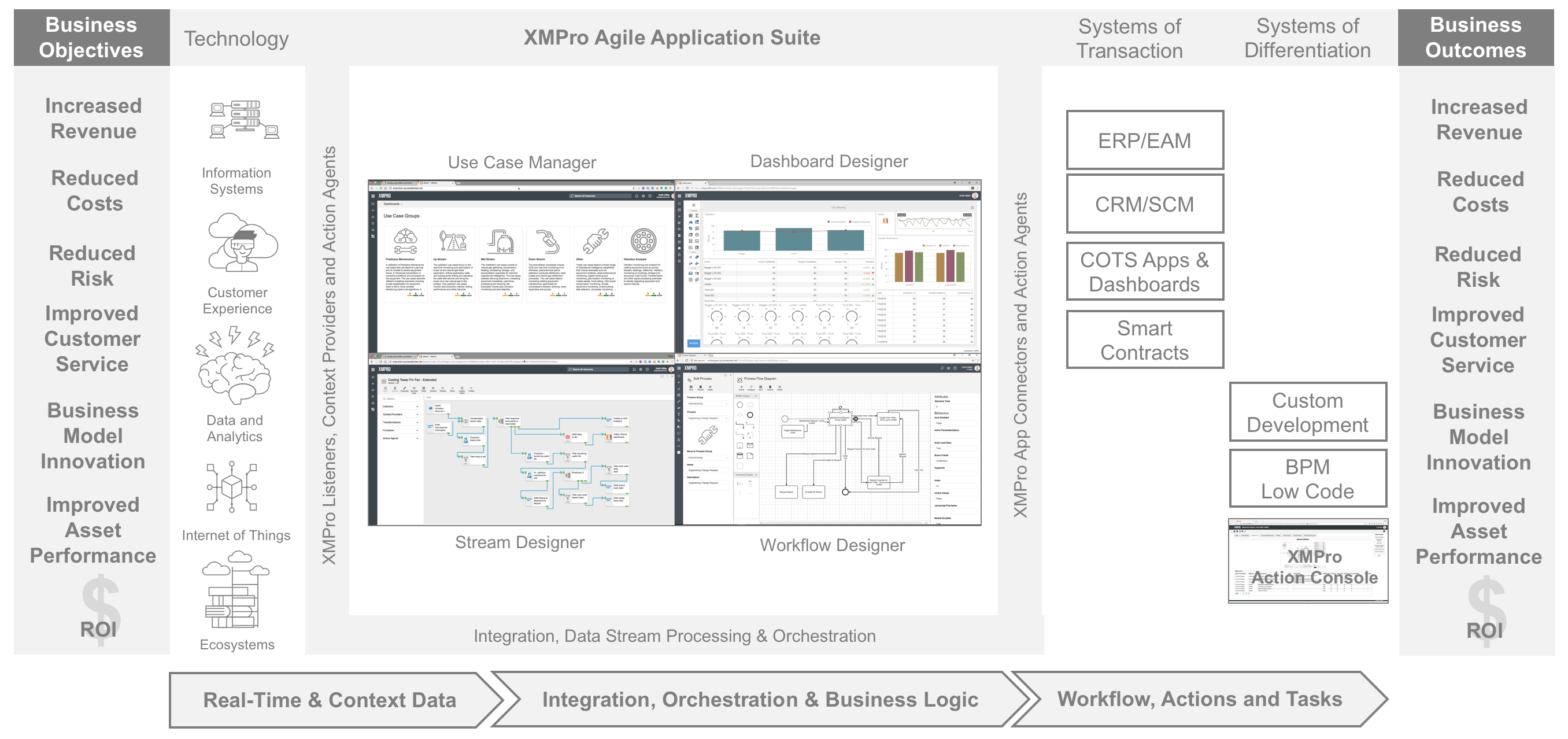 Example of a Digital Business Platform
Example of a Digital Business Platform
What It Means
Digital Business Platforms provide the “plumbing and glue” for Digital Transformation. It means that you can focus on creating new intelligent digital processes that focus on the business outcomes of digital transformation rather than wiring a technology stack together.
Aragon Research lists the following benefits of using Digital Business Platforms:
- Creating new products, services, or business models
- Accelerating revenue
- Driving efficiencies through automation
- Improving profitability
- Enhancing the customer experience
- Ensuring compliance
- Linking to ecosystems for revenue or operational improvement
It also means that the transformational insights that we gain from emerging technologies and advanced analytics can easily be integrated into our new digital business models to deliver transformational outcomes. It provides the agility to do (and change) Business @ The Speed of Thought.
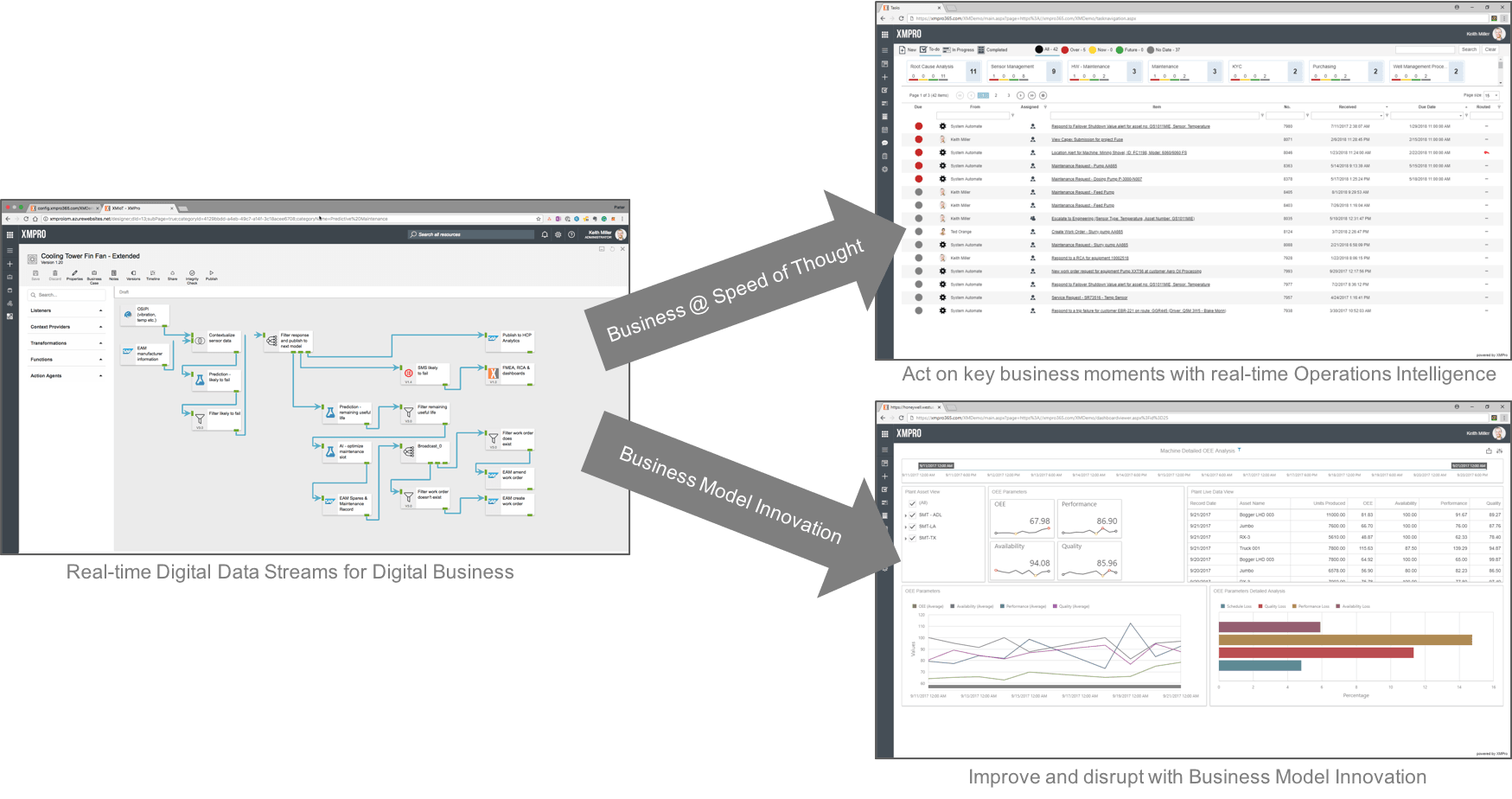
Automating this adaptable business with a Digital Business Platform is like having a smart GPS that provides not just situational awareness of where you are, but also the real-time actions and guidance needed to beat your competition to the goal post.
Here are just three examples of use cases that can be deployed on the XMPro Digital Business Platform:
- New revenue opportunities through new products and services from real-time IoT data to disrupt traditional Industrial, Healthcare, Transportation & Logistics and Insurance markets;
- New customer experience management for Retail, Banking and consumer markets with new products and services; and
- New Operational Risk management capabilities for Investment and Retail Banking to reduce risk profile and increase profitability
Contact us for a demonstration of the XMPro Digital Business Platform.



